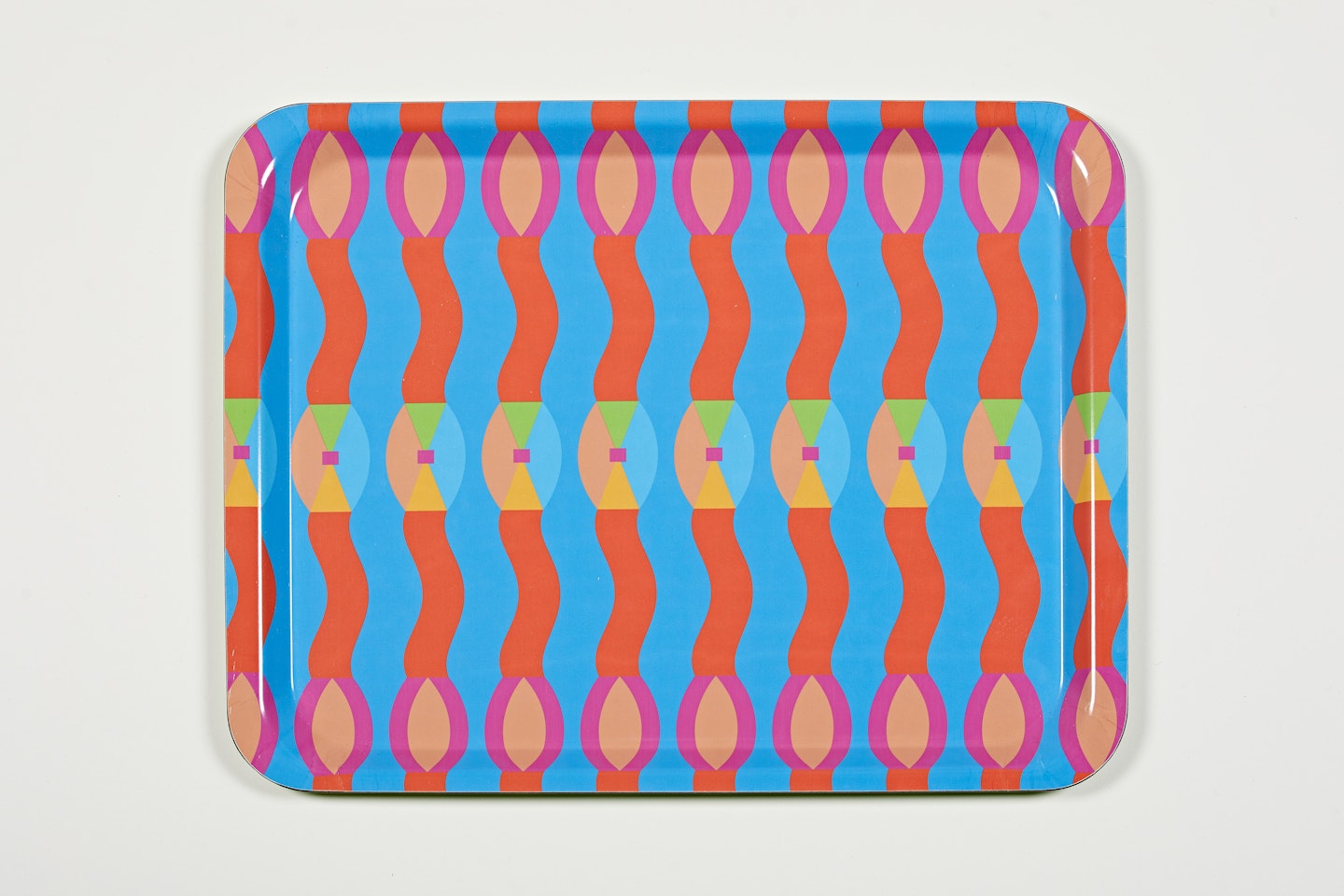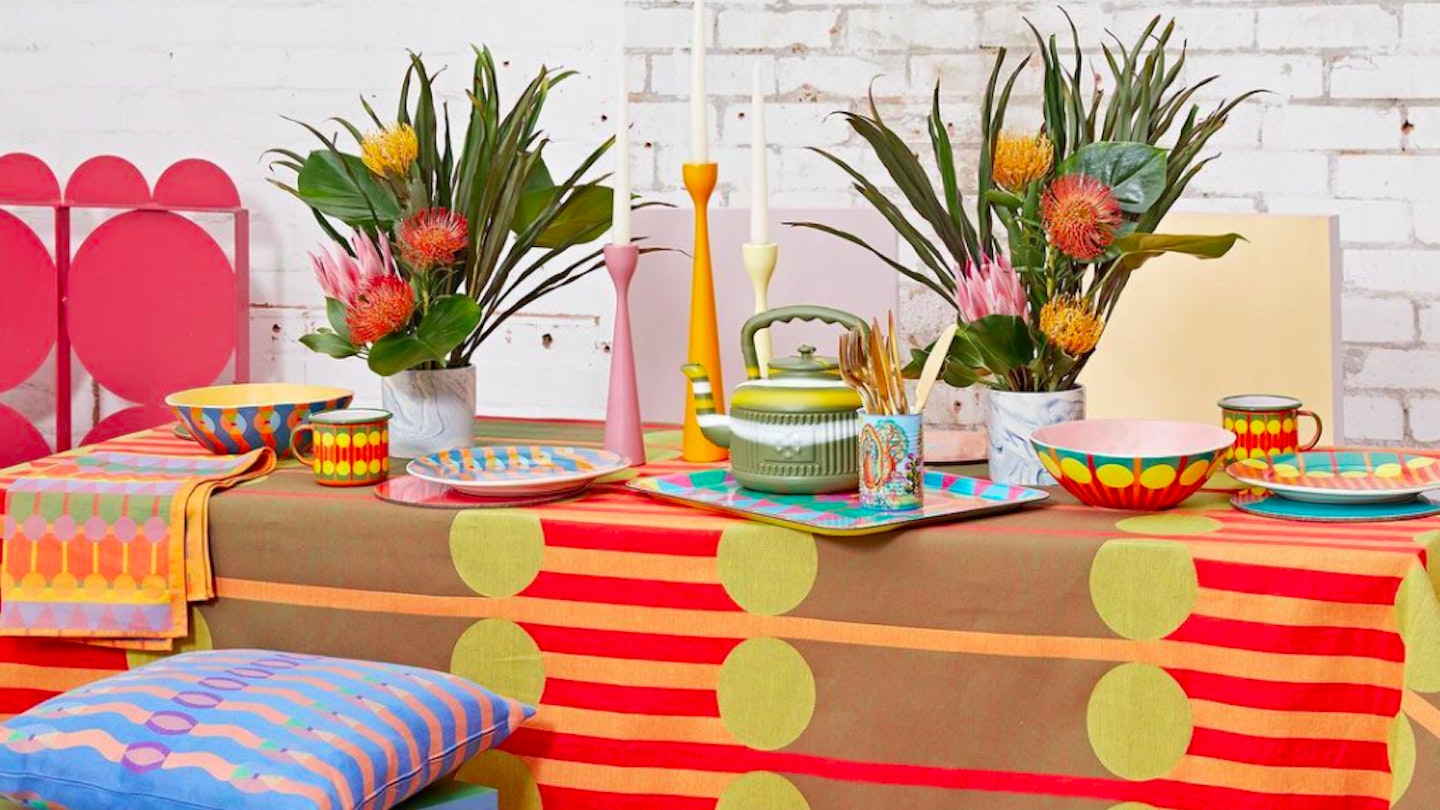Has there ever been a better time to broaden your fashion horizons? Rapidly acquiring need-to-know status, these 15 designers are already creating buzz in 2021.
SIKA
Although she grew up with her mother and sister in south London, sewing cowrie shells onto halterneck tops to copy Janet Jackson, Phyllis Taylor spent every summer in Ghana. It was the country’s thriving tailoring industry, as well as the consideration people put into getting dressed, that planted a seed in her mind that would eventually flower into SIKA, a label celebrating print and colour in their twin glories. ‘In Ghana, funerals and weddings are huge. Every Saturday, every Sunday, everyone goes out in their traditional wares and goes to support people’s families. How you look is very important,’ she says. When it came to setting up her brand in 2003, Ghana’s problem with imported second-hand clothes also made her mindful about the perils of over-producing. ‘The second-hand industry in Ghana, in particular, is probably the biggest in the world. It shows that we’re buying too many clothes and we don’t know what to do with them,’ she says. SIKA’s clothes are made-to-order in Accra, with a 20-strong team of tailors and seamstresses. Taylor’s worked with many of them right from the beginning. ‘We’ve seen them get married, have babies, it’s really lovely that we’ve all grown up together.’ Once someone places an order, the fabric production process starts within 24 hours and takes three days to finish to allow the dye to take. The weather plays a fundamental role in the final product as it’s left outside. ‘What will determine the end colour is the sun, depending on how bright it is. No print is exactly the same and that’s what special about every garment,’ she says.
The Meaning Well
The coronavirus dealt a sucker punch to the fashion industry in 2020, which for stylist and creative consultant Katie Ruensumran, radically altered her approach to clothes. The result is her brand, The Meaning Well, which uses deadstock fabric, focuses on small runs and produces right here in the UK. ‘I was thinking, ‘How can I make new things without harming the environment? This is what [the brand] represents, the philosophy of making less, meaning more.’ Its ruffled-necked dresses, made out of painterly floral-print fabrics, are ideal for the happy dressing we need in 2021. ‘It’s very depressing to repeat the same thing every single day at home. So I wake up and get dressed properly. People think I’m crazy. They ask me why have you dressed up for no reason? I answer them, ‘For myself, not for others to see’'.
Marvin T'oumo
Marvin M’Toumo, born in Guadeloupe, now living in Paris, is the designer, artist and poet behind Chien Fleur, a project that sits somewhere between clothing, performance and a publication, who won the Chloé Prize at the 35th International Festival of Fashion in Hyères. ‘Chien Fleur is a haute couture disguise wardrobe for women who love to dress up and embody character,’ says M'Toumo, who started out making clothes for films he wrote and shot, and the installations he created while studying at Villa Arson, Nice. To him, the future of fashion is about inclusivity: ‘We need to promote new perspectives regarding genders, ethnicity, sexualities, and together reshape the norms and standards in contemporary tailoring to fit every type of body and identity.'
Feng Chen Wang
Drawing on her childhood in the countryside in the province of Fujian - from her mother’s experience of raising a family to the plants that grow on the hillsides of the Wuyi Mountains - Feng Chen Wang’s Chinese heritage is at the core of her unisex designs and their ‘technical deconstruction’. She’s previously worked with local communities on a resist dye technique which is over 1,000 years old. ‘It’s a very inspiring place,’ she says. ‘I have beautiful memories of the people and the landscape.’ Wang was shortlisted for 2020's International Woolmark Prize, and has already collaborated with UGG, Converse and, most recently, Levi's.
Kaushik Velendra
Priyanka Chopra’s outfit for the 2020 Fashion Awards, a black-and-white tuxedo jacket with spectacularly moulded shoulders, was by Kaushik Velendra. Although he’s a menswear designer by trade, creating tailoring that turns traditional red carpet dressing on its head by using technical fabrics and activewear constructions, Velendra describes his brand as ‘universal and all-inclusive’: ‘It’s made to fit all kinds of men and, in turn, fits beautifully on women,’ he says. As a designer from India, Velendra’s work debunks a lot of the misconceptions surrounding the country’s approach to dress, particularly the idea that the country's clothes are always colourful and beaded. ‘I wanted to show a whole new side to Indian craftsmanship and what people can do.’
Maximilian Davis
He might have only debuted last year with Fashion East, but Maximilian Davis has already made a big splash in the industry. Friends with luminaries like Mowalola, and poised to be stocked at Browns, Davis’s first collection was inspired by stories of his grandmother’s upbringing in Trinidad. Expect clothes that are sleek, sharp, and super sexy.
gu_de
This South Korean handbag label, pronounced ‘good’, takes its cue from the ‘70s. Founder Ji Hye Koo wanted to create accessories as individual as her customers; add the Love (an elegantly-sized tote whose handles curves around its whole frame) and Nettie (a bucket with peekaboo slats of leather) to your new season wishlist.
Lola Mayeras
If you’re finally making some much-needed improvements to your home office, how about a centrepiece from Lola Mayeras? Based in the south of France, her whimsically-shaped pottery in smile-inducing shades of blue, pink and yellow, is just what the doctor ordered, plus every piece is made by hand.
Yinka Ilori
Neutrals can only lift the spirits so far, which is why the joyful colour stylings of British-Nigerian Yinka Ilori, a multidisciplinary artist who got his start by upcycling vintage furniture, need to be on your radar. His first patterned range of homewares, searingly bright and soon to be stocked at Browns, will make the perfect ice-breaker at your re-emergence dinner parties.
Loveness Lee
We’re still living through the era of earrings (thank you, Zoom), and one brand still flying under the radar enough to attract appreciative coos from colleagues is Loveness Lee. The London-based jeweller specialises in moulding and wax-casting techniques, making pieces that have an organic, almost ancient aesthetic.
CLED
LA-based CLED is so devoted to the upcycled cause that its name comes from the word’s last four letters. Its most eye-catching earrings, bracelets and rings are made out of coloured shards of discarded glass bottles, while each piece is both crafted by hand and made-to-order.
Kika Vargas
Someday we will peel off the sweatpants and properly dress up again (promise!), and when that day comes we want to wear nothing but Kika Vargas. The Colombian’s designer’s dare-to-dream dresses, arriving soon at Matchefashion.com, deserve their own party.
LASTFRAME
The tote bag has reigned supreme of late, and none is less basic (or more eye-poppingly playful) than LASTFRAME’s. Celebrating the craftsmanship of Japan, and manufactured in his hometown of Ishikawa, Takanohiro Okude set out to marry the old with the new, using an ancient knitting machine to create his dazzling patterns.
Sabirah
Inspired by Jamaican-born painter Tamara Natalie Madden, Deborah Latouche’s Sabirah will conjure memories of putting on finery and heading into the night. Those fluttering high-necked gowns, and floor-sweeping silk-lurex skirts, demand drama.
Yuhan Wang
Yuhan Wang grew up in Weihai, a seaport city in the province of Shandong, China, watching period dramas and stitching clothes for her dolls out of fabric scraps. For Wang, who was shortlisted for the 2020 LVMH Prize, history and nostalgia have always been fertile ground. ‘The future doesn’t always come from our imagination, sometimes it’s built on what we have in the past,’ she says. For SS21, Wang was designing during lockdown, staying at home and reading old books on her bookshelf. It was the mythical world of Strange Stories from a Chinese Studio, Pu Songling’s collection of illustrated fables about foxes, demons and spirits and, more abstractly, feminine power, that she picked up, intrigued by the idea that what you look like on the outside doesn’t necessarily say anything about what's going on in the inside. ‘[The spirits are] just normal people in the street dressed like normal girls, you don’t think they’re supernatural. That reminded me of what we’re going through now, all the people saving lives in the hospitals, how those women look like everyone else in the street. Those women are superwomen.’ The result is a quietly exquisite collection of draped satin dresses and cinched-waist tailoring that looks both modern and old world, east and west, all at once.
SHOP: The New Designers To Know
 1 of 9
1 of 9Feng Chen Wang, Acid Wash Denim Jeans, £300
 2 of 9
2 of 9The Meaning Well, Sky Blue Shirt, £790
 3 of 9
3 of 9gu_de, Mini Play Croc-Embossed Mini Bag, £153.55
 4 of 9
4 of 9Lola Mayeras, Hill Lamp, £345
 5 of 9
5 of 9Yinka Ilori, Omi Tray, £45
 6 of 9
6 of 9Loveness Lee, Soleil Recycled Siler Earrings, £160
 7 of 9
7 of 9CLED, Canyon Hook Bracelet, £111
 8 of 9
8 of 9LASTFRAME, Ichimatsu Check Knitted Tote Bag, £220
 9 of 9
9 of 9